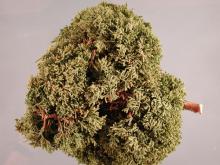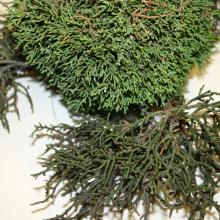Cause The phytoplasma 'Candidatus Phytoplasma phoenicium' subgroup 16SrIX-E has been associated with this problem. A witches' broom of western juniper (J. occidentalis) has been observed frequently in central Oregon. Trees with this problem seem to occur in known pockets. Affected trees do not have signs of rust or mistletoe.
Symptoms Multiple stunted shoots bearing dwarfed foliage arise on branches, forming rounded balls composed of extremely dense masses of foliage. These growths occur randomly throughout the tree and an affected tree may show an increase in incidence over time.
Cultural control None known short of removal of the dwarfed branches.
Reference Davis, R.E., Dally, E.L., Zhao, Y., Lee, I.-M., Jomantiene, R., Detweiler, A.J., and Putnam, M.L. 2010. First report of a new subgroup 16SrIX-E ('Candidatus Phytoplasma phoenicium' - related) phytoplasma associated with juniper witches' broom disease in Oregon, USA. British Society for Plant Pathology. http://www.bspp.org.uk/publications/new-disease-reports/ndr.php?id=020035


